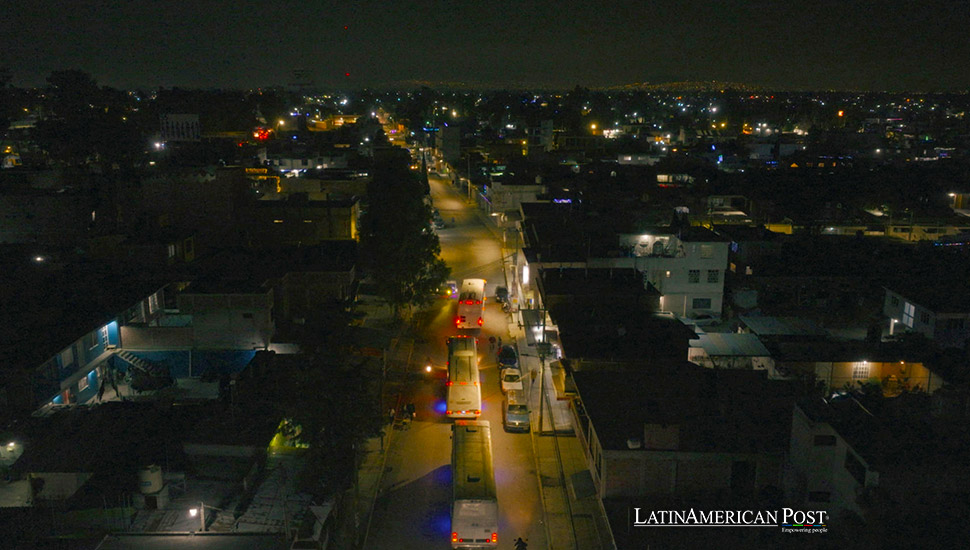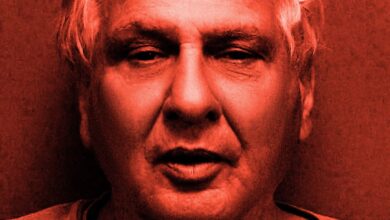The Overlooked Details of Mexico’s Ayotzinapa Massacre Ten Years Later

A decade after the Ayotzinapa tragedy, where 43 teaching students disappeared, the focus remains on the deep-rooted history of militant activism at the Ayotzinapa Rural Teachers’ College. The horrific event brought attention to Guerrero’s complex socio-political environment, student protests, and violence.
In the shadow of the Ayotzinapa tragedy, where 43 teaching students vanished after clashing with local authorities in Iguala, Guerrero, the story of the students’ activism and their school’s legacy of protest takes center stage. The Raúl Isidro Burgos Rural Teachers’ College, located in Tixtla, Guerrero, Mexico, is no ordinary institution. Founded in 1926, this all-male school has long been a symbol of resistance, where students are taught to be teachers and fight for social justice in one of Mexico’s most volatile states.
Known for their radical and militant protests, students from Ayotzinapa were no strangers to confrontation. Their activities frequently involved hijacking buses and trucks to fundraise for their causes or participate in demonstrations. It was a routine practice largely tolerated by bus companies and law enforcement despite the inconvenience it caused passengers and the occasional damage to property. However, the events that transpired on September 26, 2014, would prove to be different, culminating in one of Mexico’s most infamous cases of enforced disappearance. This unresolved mystery continues to haunt the nation to this day.
A Tradition of Militant Protests
The Ayotzinapa Rural Teachers’ College students were well-versed in protest tactics that often pushed the boundaries of legality. Hijacking buses was not uncommon; it was a regular part of their activism. According to the New York Times, the commandeering of vehicles by students was “largely tolerated” by bus companies, who understood that the buses would typically be returned after the protests concluded. The students, fighting for better education, labor rights, and broader social justice, saw these actions as necessary disruptions to challenge the status quo.
The students from Ayotzinapa belonged to a long line of teacher activists in Guerrero, a state known for its socio-political unrest. Teachers in Guerrero, particularly those from Ayotzinapa, are known for their militant demonstrations, often putting them at odds with local authorities. The tactics used during protests—such as throwing rocks at police, blocking roads, and taking over toll booths—were part of a broader strategy to draw attention to their demands. These protests were not without risk, as local authorities, already wary of leftist movements in the region, often responded with force.
Guerrero has a long history of political unrest, dating back to the Mexican Dirty War of the 1960s and 70s when the government ruthlessly suppressed leftist guerrilla movements. The region’s police and military remain suspicious of protests, viewing them as potential fronts for guerrilla activity or rival political factions. This deeply rooted tension between the government and student activists was an essential backdrop to the events that unfolded in Iguala in 2014.
The Night of the Disappearance
On the evening of September 26, 2014, over 100 students from Ayotzinapa set out for Iguala, a city in Guerrero, with the intention of commandeering buses to travel to Mexico City for the commemoration of the 1968 Tlatelolco massacre. This annual protest, a hallmark of student activism in Mexico, remembers the massacre of students by the Mexican military just days before the 1968 Olympics in Mexico City.
However, the students never made it to their destination. Local police intercepted the buses the students had taken, setting off a chain of violent events that would forever alter the course of the nation. Eyewitnesses and survivors recount how the police opened fire on the buses, killing two students. In the chaos, some students managed to flee into the hills, while others were captured and forced into police vehicles.
Reports from that night paint a grim picture. The municipal police, reportedly acting on orders from Iguala’s mayor, handed over the captured students to members of the Guerreros Unidos, a local drug cartel. What followed remains a source of contention and speculation. The official government investigation, led by Attorney General Jesús Murillo Karam, concluded that the cartel killed the students and burned their bodies in a landfill before disposing of the remains in a river. However, this version, dubbed the “historic truth,” was later discredited by independent forensic experts, who deemed it scientifically impossible for the bodies to have been incinerated in such a manner.
Who Was Behind the Disappearance?
As investigators delved deeper into the case, alternative theories emerged, each more chilling than the last. Some suggested that the Guerreros Unidos cartel was using the buses hijacked by the students to transport drugs without the students’ knowledge. This theory posits that the cartel mistakenly believed the students were rival gang members trying to steal their shipment and ordered their execution to prevent them from revealing the cartel’s operation.
Another theory implicates the Mexican Army, which was monitoring the situation but did nothing to intervene. Reports surfaced that military personnel were aware of the students’ abduction but allowed the events to unfold without offering assistance. This raised suspicions that the Army may have been complicit in the crime, either by protecting the cartel or by being involved in the disappearance themselves.
The Inter-American Commission on Human Rights (IACHR) and other independent investigators questioned the role of the military and federal police, leading to a wave of protests across the country. Demonstrators demanded the truth about what happened to the students and accountability for those involved. Under pressure from domestic and international communities, the Mexican government was forced to reopen the investigation.
AMLO’s “Truth Commission” and Ongoing Struggles
When President Andrés Manuel López Obrador (AMLO) took office in 2018, he promised to get to the bottom of the Ayotzinapa case. He established a “truth commission” to lead a new investigation, raising hopes that the families of the missing students might finally receive the answers they had been fighting for. However, despite arrests of high-profile figures, including former Attorney General Murillo Karam, the Truth Commission has made little headway.
In February 2024, the families of the missing students announced they would no longer engage in dialogue with the government, citing frustration over the lack of transparency and the continued refusal of the military to release critical information. The investigation, which began with high hopes, has stalled, leaving the fate of the Ayotzinapa 43 shrouded in mystery.
The military’s role in the disappearance remains a sensitive issue, with many suspecting that they either aided the cartel or actively participated in the crime. Despite AMLO’s promises of an exhaustive investigation, the families and the public still await definitive answers.
A Decade of Grief, Protest, and Resilience
The Ayotzinapa case is more than just a story about 43 missing students. It is symbolic of the broader issues plaguing Mexico—corruption, impunity, and the pervasive influence of drug cartels. Since the start of the Mexican drug war in 2006, more than 100,000 people have gone missing, and many more have lost their lives. The disappearance of the Ayotzinapa 43 has become a powerful symbol of the violence and injustice that so many families in Mexico continue to face.
For the families of the missing students, the past decade has been a journey of grief, frustration, and resilience. They have marched in the streets, met with government officials, and taken their fight to international organizations. Their determination has turned the Ayotzinapa 43 into a global symbol of resistance against state violence and impunity.
As the tenth anniversary of the tragedy approaches, the families continue to demand justice. They have refused to be silenced, even as the government has struggled to provide the answers they seek. The Ayotzinapa case remains unresolved, but the legacy of the 43 students lives on through the continued activism of their families and supporters.
The Legacy of Ayotzinapa
The disappearance of the 43 students from Ayotzinapa is one of the darkest chapters in Mexico’s recent history. It exposed the deep-seated issues of corruption, collusion, and violence that have plagued the country for decades. Despite numerous investigations, the truth about what happened to the students remains elusive, and justice has yet to be served.
Also read: The Forgotten Victims of Mexico’s “Death Flights”
However, the tragedy has also inspired a movement—a movement led by the families of the missing students, who refuse to give up their fight for justice. Their resilience has kept the story of Ayotzinapa alive, ensuring that the case remains a focal point in the national and international conversation about human rights in Mexico.
As the tenth anniversary approaches, the families’ fight for the truth reminds us that the struggle for justice is far from over. The memory of the Ayotzinapa 43 will continue to inspire those who demand accountability and an end to impunity in Mexico, even as the search for answers goes on.





